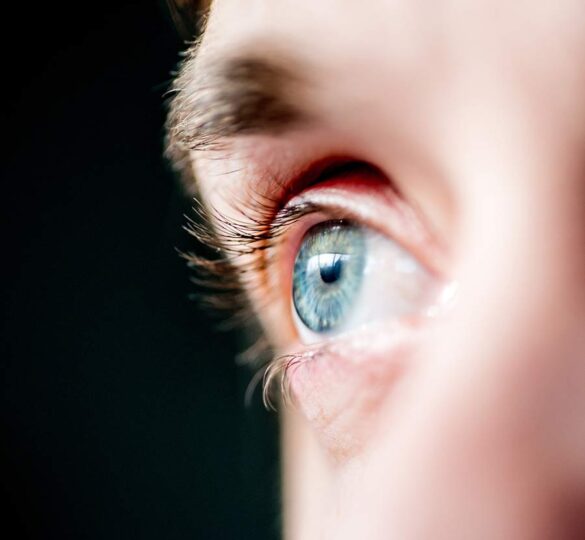Laser Iridotomy: Frequently Asked Questions
Laser peripheral iridotomy is the standard first-line treatment in closed-angle glaucoma and eyes at risk for this condition.

Laser peripheral iridotomy has been used since 1984 both as treatment and prevention of the disease.
1. What is the angle and what is closed angle glaucoma?
The angle is the space between the clear part of the eye (cornea) and the colored part (iris), close to their meeting point near the edge of the iris. It contains the trabecular meshwork, which is the main structure that directs fluid out of the eye. The angle can be examined with a test called gonioscopy, which is done by the eye doctor in the office.
In closed angle glaucoma, the angle is closed in many or most areas, causing increased eye pressure, which leads to optic nerve damage, and possible vision loss. This rise in eye pressure may occur suddenly (an acute attack of angle closure) or gradually. There are also precursor forms of the disease in which the angle is closed but the eye pressure is not high and the optic nerve is not affected yet.
2. How does laser iridotomy work?
It creates a hole in the outer edge of the iris, leading to an opening of the angle in the majority of cases. After the angle is widened from the procedure, the trabecular meshwork is exposed and fluid outflow is enhanced.
3. Who is a candidate for laser iridotomy?
It is recommended in eyes which have the angle closed for at least half the eye and have high eye pressure or glaucoma. In eyes which have a closed angle but normal eye pressure and no optic nerve damage, laser iridotomy may be recommended as a preventive treatment. In a recent large prospective study of such eyes, it was shown that there was overall a low risk of developing high eye pressure but the risk was lower among eyes that received laser iridotomy compared to those that did not.
4. What should I expect during the procedure?
The eye is usually pretreated about half an hour before the procedure with drops that make the pupil small. Just before the procedure, anesthetic drops are placed to numb the surface of the eye, a lens is then placed on the eye to perform the laser. The procedure usually takes 5-10 minutes and some patients may experience minor pain.
5. What should I expect after the procedure?
There is temporary blurriness of vision. The eye may be a little red, light sensitive, and/or uncomfortable, and there may also be a mild headache due to the eyedrops given before the laser. The eye pressure is usually assessed within 30 minutes to 2 hours after the laser and anti-inflammatory eyedrops are usually prescribed for a few days
6. Will the laser improve my vision?
No. Iridotomy is intended to preserve the vision and prevent glaucoma from appearing or progressing.
7. What are the risks?
Possible risks include, rise in eye pressure, bleeding at the laser site, and inflammation; these are usually temporary. Closure of the iridotomy may occur, requiring retreatment. Extra visual images including bright lights or flashes, or double vision in the treated eye, may rarely occur.
8. What happens if it doesn’t work?
In about 25% of cases, the angle may not open. Depending on the situation, some patients might need further laser procedures, medical treatment, or surgery. It may be possible that your ophthalmologist suggests close follow up.
9. If I have glaucoma, will I still need to use my glaucoma medications?
Yes. Laser iridotomy is not a substitute for glaucoma eye drops in most cases if the patient is already on medication prior to the procedure.
10. How long does the effect last?
Although the angle widens in most cases after laser, normal age-related changes may subsequently alter the angle region. Cataract formation could close the angle again and cataract extraction may be required.
Article by Shan Lin, MD. Posted on May 5, 2020; Reviewed on March 16, 2022.

Shan Lin, MD
Shan Lin, MD is a glaucoma specialist at the Glaucoma Center of San Francisco. Dr. Lin specializes in glaucoma and cataract surgery, and in his research he studies new medications for the treatment of progressive glaucoma and ocular hypertension.